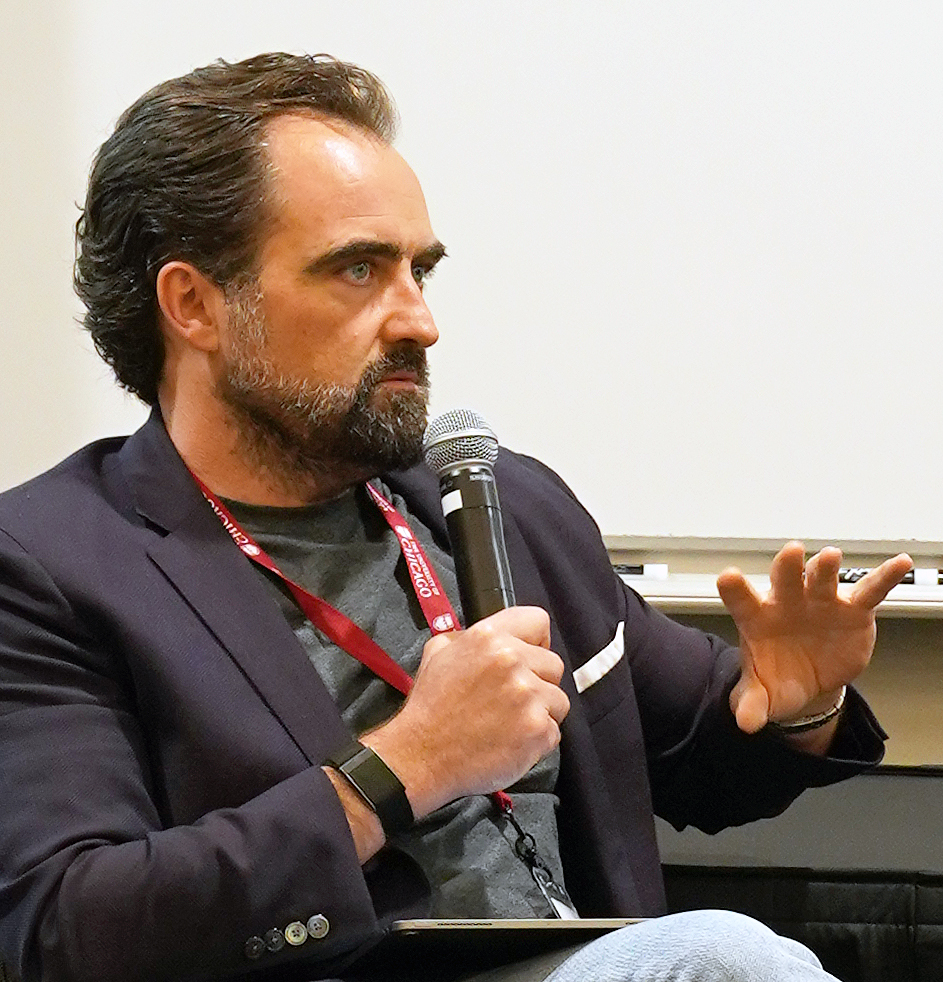A marketing and product management executive discusses his approach to teaching the fundamentals of marketing using real-world assignments that equip students with the ability to understand how to approach contemporary challenges in digital marketing.
Having spent over 20 years in marketing on both the agency and client side, Michael Bloom, director of product management at Teletrac Navman and Marketing instructor at the Graham School, has come to appreciate the advantages of approaching certain key marketing processes with an engineering mindset.
“Marketing is both a science and an art,” says Bloom. “For decades, engineers have been looking through the eyes of the people they are trying to solve problems as a way of providing insights into their motivations and decisions.”
Using these insights to ground his digital marketing course, he hopes to give his students an array of design thinking strategies that will enable them most effectively to use their time and resources as they engage their audience.
“When you bring design thinking to bear on the field of marketing a number of new and very important perspectives are opened up that deepen our understanding of what our customers want to buy and why they want to buy it,” Bloom says. “This involves understanding our companies and our customers in new and deeper ways opening up new angles to better align the marketing mix, messaging and positioning to generate the buying actions desired.”
Core Marketing Areas Considered from a Digital Perspective
Bloom covers the core aspects of the marketing process in his class Managing Integrated Marketing Communications, including the marketing plan, power of storytelling, competitive differentiation, and the creation of buyer personas. He will also share with students the skills required to engage their audience and deliver a marketing return on investment.
“The way you develop your marketing plan, use storytelling, or create your buyer persona—those are absolutely essential parts to the marketing process,” he says. “When considered from a design thinking perspective, buyers are brought to the forefront and you begin thinking about aspects of the buying process that you wouldn’t have considered before—which are actually quite crucial to the final sale.”
In the case of the marketing plan, for instance—arguably the most important part of the marketing process—everyone needs to make the leap of faith that what’s being proposed will provide the necessary revenue for success. It is a matter, Bloom notes, of instilling confidence in the recommendations, while ensuring that risk is fully assessed risk in the areas greatest uncertainty.
“This is the sort of thing we used to spend six months working on to produce a 150-page report,” he says. “Who has the time to read that? Certainly not the CEO. In my class, my approach to the marketing plan is lean-focused. The goal is to take those hypothetical 150 pages and reduce their key points to a single view. That’s not to say we skimp on the hard work that goes into developing the plan. But with this approach, we make it easier to get to the more productive conversations with the CEO, because the most important points aren’t buried (or hidden) within the reams of content.”
Assignments Geared to Today’s World
Conceived as a way to provide students with the tools and skills that apply to an increasingly time- and budget-crunched world, a guiding thread of the course will be the students’ engagement with a real-world company. From the beginning of class, students will develop a marketing plan based on that company’s market, objectives, budgets, and stakeholders with the goal of producing a deliverable the company can actually use.
“In the past, marketing courses have approached teaching these skills in a completely fictional way,” he says. “Typically, you pick a company of your choice and, since the exercise is fictional, you create a marcom plan with unrealistically high budgets and since you don’t need to present to a stakeholder, you don’t have to negotiate the objections or barriers. In my class, by ensuring that students stay accountable to a real organization with real limitations, they’ll be forced to think carefully about the most critical areas of the marketing process while working under the sorts of constraints you encounter in the real world.”



